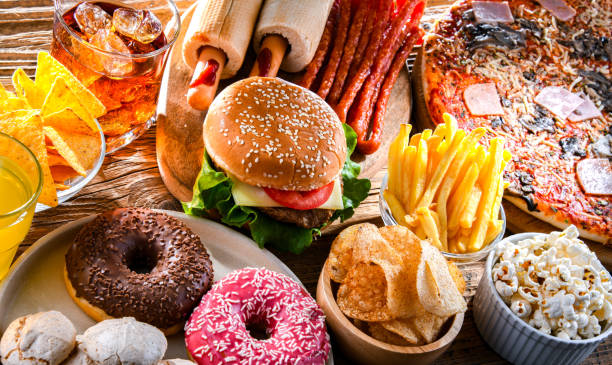Introduction
Fast food has become an integral part of our daily lives, offering quick, convenient, and tasty meals to millions of people worldwide. But what exactly is fast food, and how did it become so pervasive? Let’s explore the history, impact, and future of this global phenomenon.
The Evolution of Fast Food
Early Beginnings
Fast food as we know it began in the early 20th century, with the establishment of White Castle in 1921. This marked the birth of a new dining concept where food was prepared and served quickly to cater to the fast-paced lifestyle of the time.
Rise in Popularity
The post-World War II era saw a boom in fast food chains. McDonald’s, founded in 1940, revolutionized the industry with its efficient assembly-line production method, making fast food more accessible and affordable to the masses.
Global Expansion
By the late 20th century, fast food had spread across the globe. American chains like KFC and Burger King opened outlets in countries around the world, adapting their menus to suit local tastes while maintaining their core offerings.
Popular Fast Food Chains
McDonald’s
No discussion of fast food is complete without mentioning McDonald’s. Known for its iconic golden arches, McDonald’s serves millions of customers daily with its signature burgers, fries, and shakes.
Burger King
Founded in 1954, Burger King has become a global powerhouse with its flame-grilled burgers and the famous Whopper. The chain’s “Have It Your Way” slogan emphasizes customization and customer satisfaction.
KFC
Kentucky Fried Chicken, or KFC, is synonymous with its crispy, flavorful fried chicken. Founded by Colonel Harland Sanders, KFC has grown to become a favorite in many countries, particularly in Asia.
Subway
Subway’s rise to fame can be attributed to its fresh, made-to-order sandwiches. With a focus on healthier options, Subway has carved out a niche in the fast food market, appealing to health-conscious consumers.
Taco Bell
Taco Bell offers a unique twist on fast food with its Mexican-inspired menu. From tacos and burritos to nachos and quesadillas, Taco Bell has created a loyal following with its bold flavors and innovative menu items.
Fast Food and Modern Culture
Fast Food in Pop Culture
Fast food has left an indelible mark on pop culture. Movies, TV shows, and music often reference or feature fast food, reflecting its significance in contemporary society.
Influence on Social Behavior
The convenience of fast food has changed the way we eat and interact. It has made eating out more accessible, fostering social gatherings and family outings centered around fast food restaurants.
The Fast Food Lifestyle
The fast food lifestyle is characterized by its emphasis on speed and convenience. It caters to busy individuals who need a quick meal without compromising on taste or satisfaction.
Health Implications of Fast Food
Nutritional Concerns
Fast food is often criticized for its high calorie, fat, sugar, and sodium content. Regular consumption of fast food can lead to various health issues, including obesity, heart disease, and diabetes.
Common Health Issues
Frequent fast food consumption is linked to numerous health problems. These include high blood pressure, high cholesterol, and an increased risk of developing chronic conditions like cardiovascular disease.
Fast Food vs. Home-Cooked Meals
While fast food offers convenience, home-cooked meals are generally healthier. They allow for better control over ingredients and portion sizes, contributing to a more balanced diet.
Fast Food Innovations
Menu Diversification
Fast food chains are constantly evolving their menus to meet changing consumer preferences. This includes introducing new items, seasonal offerings, and limited-time promotions to keep customers engaged.
Technological Advancements
Technology has transformed the fast food industry. From self-service kiosks and mobile apps to delivery services and online ordering, these innovations have enhanced the customer experience.
Healthier Options
In response to growing health consciousness, many fast food chains now offer healthier options. Salads, grilled items, and low-calorie meals are becoming more common, catering to a wider range of dietary needs.
The Future of Fast Food
Trends and Predictions
The fast food industry is poised for continued growth, with trends such as plant-based alternatives, sustainable packaging, and tech-driven experiences leading the way.
Sustainable Practices
Sustainability is becoming a key focus for many fast food chains. Efforts include reducing waste, sourcing ingredients responsibly, and implementing eco-friendly practices in operations.
The Role of Technology
Technology will continue to shape the future of fast food. Innovations like AI-powered kitchen equipment, drone deliveries, and personalized ordering systems are set to revolutionize the industry.
Conclusion
Fast food has undeniably changed the way we eat and live. While it offers convenience and variety, it is important to be mindful of its health implications. As the industry continues to evolve, the focus on innovation and sustainability promises an exciting future for fast food lovers.
FAQs
Why is fast food so popular?
Fast food is popular because it is convenient, affordable, and tasty. It caters to busy lifestyles and offers a quick solution for meals.
Is fast food bad for your health?
Consuming fast food regularly can be harmful to your health due to its high calorie, fat, sugar, and sodium content. It is linked to various health issues like obesity and heart disease.
Can fast food be part of a balanced diet?
Yes, fast food can be part of a balanced diet if consumed in moderation and complemented with healthier choices. Opting for salads, grilled items, and smaller portions can help.
What are some healthy fast food options?
Many fast food chains now offer healthier options, such as salads, grilled chicken, and low-calorie meals. It’s important to choose items that are lower in fat, sugar, and sodium.
How has technology impacted the fast food industry?
Technology has greatly impacted the fast food industry by improving efficiency and customer experience. Innovations like self-service kiosks, mobile ordering, and delivery apps have made it easier for customers to access their favorite fast food.

